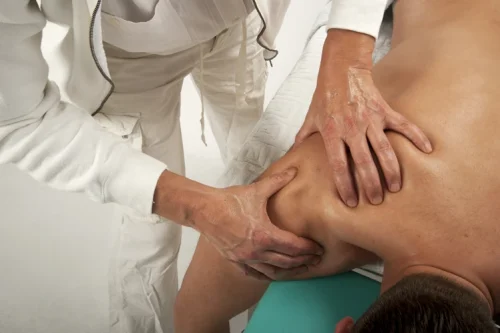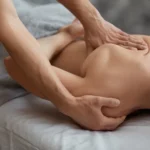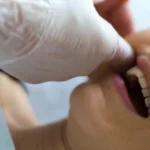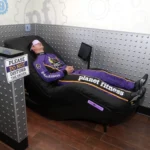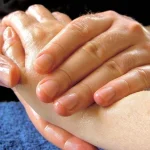Massage therapy can be a beneficial post-operative tool for many patients, but knowing when it is safe to receive a massage after surgery is important. In the right circumstances, massage therapy can help reduce pain and inflammation, improve circulation, and aid healing. This article will discuss the factors to consider when determining if massage therapy is safe after surgery and provide tips for getting the most benefit from massage post-op.
Table of Contents
Benefits of Massage Post-Op
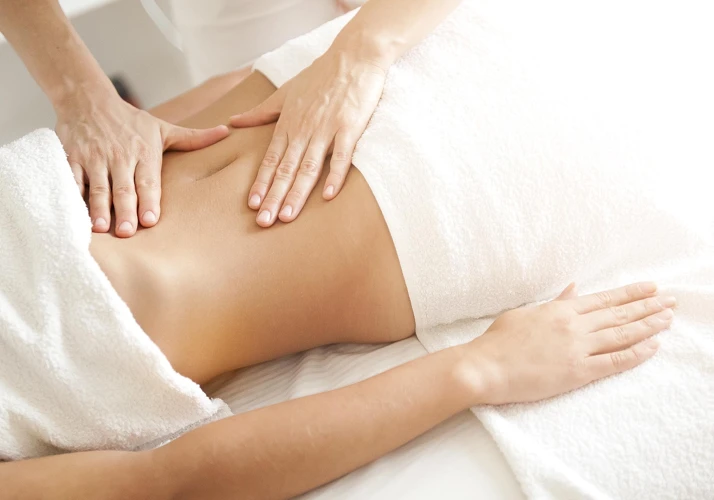
Post-operative massage provides a plethora of benefits for patients. It helps to reduce pain, swelling and inflammation, improve flexibility and range of motion, and improve circulation. It also helps reduce stress and anxiety, promote relaxation, and enhance sleep quality.
- Reduces Pain: Post-op massage therapy helps relieve pain by relaxing the muscles and soft tissues, increasing blood flow and decreasing inflammation.
- Improves Flexibility and Range of Motion: Massage therapy helps to stretch and loosen the muscles and soft tissues, improving flexibility and range of motion.
- Improves Circulation: Massage therapy helps to stimulate the circulatory system, increasing the flow of oxygen and nutrients to the area.
- Reduces Stress and Anxiety: Massage therapy can help to reduce stress and anxiety by promoting relaxation.
- Improves Quality of Sleep: Massage therapy can help enhance sleep quality by helping to relax the body and mind.
It is important to consult with your doctor before getting a massage post-op, as there may be specific restrictions on how long to wait for a massage after surgery, depending on the type of procedure and the individual circumstances.
Types of Massage After Surgery
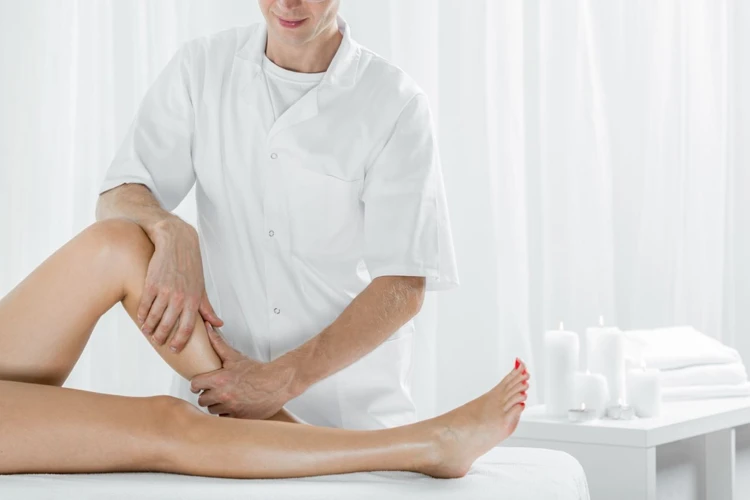
Swedish Massage
Swedish massage is the most popular form of massage therapy post-surgery and is known for its gentle, long, kneading strokes. This type of massage therapy helps to improve circulation, reduce stress, and stimulate the flow of lymphatic fluid in the body. It can also help to reduce pain and tension in the affected area.
Deep Tissue Massage
Deep tissue massage is a more intense form of massage therapy that targets the deeper layers of muscle and connective tissue. It is often used to treat chronic pain, as it can help release muscle tension and fascia tension. It can also help to reduce inflammation and improve circulation.
Trigger Point Massage
Trigger point massage is a form of massage therapy used to target areas of tension and pain in the muscles specifically. This type of massage works by applying pressure to the affected area to release tension and promote healing. It can also help to reduce inflammation and improve circulation.
No matter which type of massage therapy you choose, it is important to remember that you should wait at least four weeks after surgery before receiving a massage. It is also important to consult with your doctor or surgeon before getting a massage to ensure that it is safe and appropriate for your particular situation. How soon after surgery can I get a massage will depend on the type of surgery you had and the type of massage therapy being used.
When is Massage After Surgery Safe?
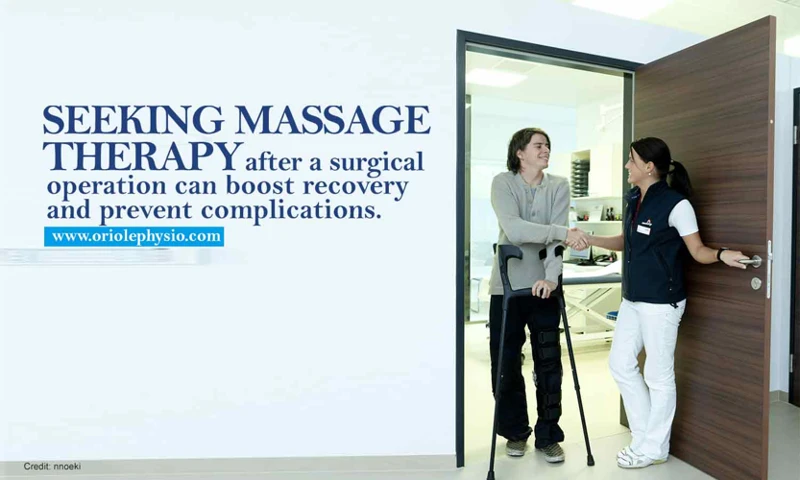
Generally, massage therapy post-op is considered safe when the wound is completely healed and the patient has received clearance from their physician. However, it is important to note that massage should not be done directly on the incision site, as this can increase the risk of infection.
In most cases, massage can be safely started four to six weeks after surgery, or when the doctor has given the green light for regular physical activity. It is important to consult with your doctor prior to receiving a massage to ensure that it is safe for you to receive, and to make sure that any post-surgical precautions are taken into consideration.
Massage may be delayed for months or even years, for more serious cases, such as those involving major surgery or prolonged recovery, as the risk of infection or other complications is higher. Even when the wound has healed, the patient should consult their doctor to ensure that massage will not interfere with any post-surgical treatments or medications.
When it comes to when you can get a massage after surgery, the best thing to do is to follow your doctor’s advice and wait until they have given you the go-ahead. While massage can be an effective and therapeutic way to help manage pain and speed up recovery, it is important to ensure that it is safe to do so before proceeding.
How Long to Wait for Massage After Surgery
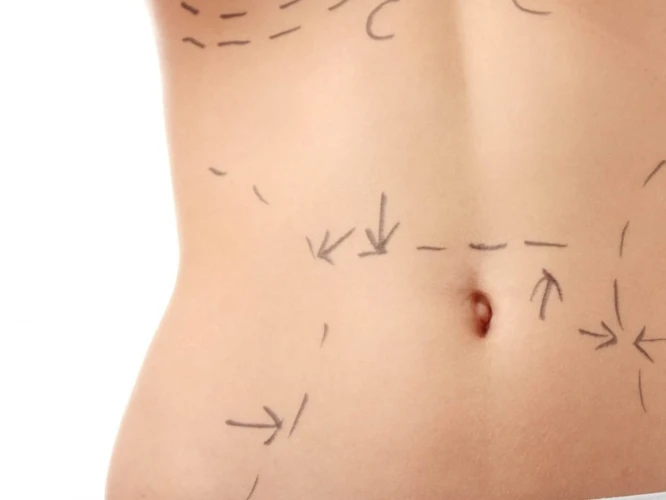
- Generally, it is recommended to wait at least 4 weeks after surgery before receiving a massage. This allows the body to heal properly and reduces the risk of any complications.
- Your doctor or therapist may recommend a longer wait time depending on the type of surgery you had, the type of massage being done and the area being massaged.
- If you had a major surgery such as spinal surgery, it’s generally recommended to wait at least 6 weeks before receiving a massage.
- If you had a minor procedure such as a biopsy, it may be safe to receive massage therapy within a few days after the procedure.
- Your doctor or therapist may advise waiting for lymph nodes to recover before having a massage. This may take up to 8 weeks.
- Your massage therapist may also advise against having a massage too soon after surgery, even if your doctor has determined it to be safe.
- Always consult your doctor or massage therapist before receiving a massage after surgery. They will be able to advise you on the best course of action for your recovery.
How Soon After Surgery Can I Get a Massage?
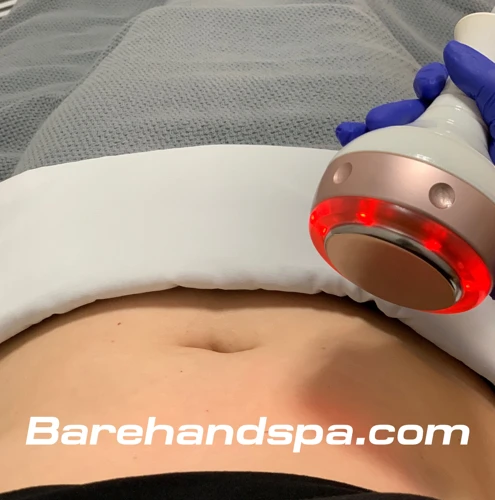
Waiting at least four to six weeks before receiving a massage after surgery is recommended.
- Patients should consult with their doctor before receiving a massage post-op.
- Massage should not be applied to the area where the incision was made.
- Massage can help reduce pain, improve range of motion, reduce swelling and improve circulation.
- Massage can help with scar tissue mobilization and can also help reduce scar tissue.
- The massage therapist may use light strokes, gentle stretching, and deep tissue work to help reduce tension and promote overall healing.
- It is important to remember that the massage therapist should only work within the limits of what the patient can tolerate.
- It is essential to ensure the patient is comfortable and not in pain during the session.
Massage therapy can be a beneficial treatment for post-operative recovery. However, it is important to consult with your doctor before receiving massage therapy to ensure it is safe and appropriate for your individual needs.
When Can You Get a Massage After Surgery?
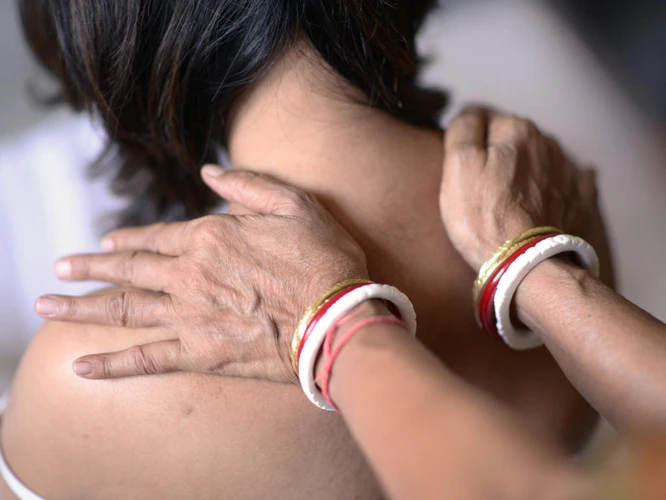
Minor Surgery
It is generally safe to get a massage two days after minor surgery. You may experience some discomfort, but this will usually subside after a few minutes. Ask your doctor if it is safe to get a massage if you’re feeling pain or discomfort.
Major Surgery
Waiting at least four to six weeks before getting a massage after major surgery is recommended. During this time, your body needs to heal and get used to being in a new position. A massage can help reduce inflammation and swelling and improve circulation in the affected area. When you’re ready to have a massage, talk to your doctor first.
Massage After Surgery Precautions
Do Not Put Pressure On Incision Sites: Incision sites should not be massaged or put under any pressure. This can cause further damage to the area, as well as a risk of infection. Avoid Deep Tissue Massage: Deep tissue massage can put too much pressure on the body, which can cause pain and discomfort. Instead, opt for a light, gentle massage. Do Not Massage Over Bruising: Bruising can indicate trauma to the area and should not be massaged until the bruising is gone. Avoid Heat: Hot stones, hot packs, and heated massage oils should not be used in the area of the surgery, as this can cause inflammation and further damage to the area. Talk to Your Doctor: It is important to consult your doctor before getting a massage after surgery. Your doctor can provide recommendations on the best massage techniques for your specific recovery and needs.
Frequently Asked Questions
How Soon Can I Receive Massage Therapy After Surgery?
It Depends on the Type of Surgery:
- For minor surgeries, massage therapy may be available as soon as the first day after surgery.
- For more major surgeries, it is best to wait at least a week before receiving massage therapy.
- For major surgeries, it is essential to wait until the incision has healed before receiving massage therapy.
- For surgeries involving bone or muscle injuries, massage therapy can be beneficial in helping to reduce pain and inflammation.
- If unsure, it is best to check with your doctor or surgeon before scheduling massage therapy.
It Is Best to Check With Your Doctor Before Booking:
- Your doctor will be able to determine the best time for you to receive massage therapy after surgery.
- Your doctor can also advise you on the type of massage therapy that is safe for you.
- Your doctor may also be able to recommend a massage therapist who is experienced with post-surgical massage.
What kind of massage techniques should I use post-surgery?
1. Light Touch Massage – Light touch massage is a gentle technique using soft, flowing strokes to promote relaxation, reduce stress, and enhance overall well-being
2. Trigger Point Release – Trigger point release is another massage technique that can help to relieve pain and improve the range of motion after surgery. This technique works by targeting specific muscles and releasing tightness.
3. Myofascial Release – Myofascial release is a massage technique that works to release tension in the muscles and connective tissues. This technique can help to improve the range of motion, reduce tension, and increase circulation.
4. Deep Tissue Massage – Deep tissue massage is a more intense massage technique that can help reduce pain, improve range of motion, and reduce swelling. It is important to be careful with deep tissue massage, as it can be too intense for some post-operative patients.
5. Lymphatic Drainage – Lymphatic drainage is a massage technique that can help to reduce swelling and improve circulation. This technique works by gently stimulating the lymphatic system to improve the flow of lymph fluid.
Are there any contraindications for massage therapy after surgery?
- Open wounds: Massage should not be performed on an open wound or incision until it is healed.
- Fever: Massage should not be performed on someone with a fever.
- Infection: Massage should not be performed if the area has an infection.
- Severe Pain: Massage should not be performed if the area feels too painful.
- Excessive Bleeding: Massage should not be performed if the area is bleeding excessively.
- Deep Vein Thrombosis: Massage should not be performed if the person has a history of deep vein thrombosis.
- Heart Conditions: Massage should not be performed if the person has a history of heart conditions.
It is important to be aware of the potential contraindications of massage therapy after surgery. Massage should be avoided if any of the above signs or symptoms are present.
Are there any special precautions I need to take when receiving massage therapy after surgery?
Yes. When considering massage therapy after surgery, it is crucial to take the following precautions:
- Consult your doctor: Before starting massage therapy after surgery, you must consult your doctor to gain approval. Your doctor can guide you on the type of massage therapy that is safest for your situation.
- Choose a qualified therapist: Choosing a qualified massage therapist experienced in working with post-surgery patients is essential.
- Be aware of the area of treatment: Be mindful of the area of treatment and ensure the massage therapist avoids any incision sites. It is also important to inform the massage therapist of areas that feel tender or sore.
- Choose a gentle massage: Choose a gentle massage technique that focuses on relaxation and stress relief. Avoid any deep tissue or pressure massage.
- Listen to your body: If at any time during the massage therapy you experience any discomfort or pain, inform the massage therapist immediately.
By following these precautions, you can ensure that massage therapy after surgery is safe and beneficial.
How Often Should I Receive Massage Therapy After Surgery?
The frequency of massage therapy post-surgery depends on the type of surgery, the individual’s healing process, and their overall health. Generally, it is recommended to wait until the surgical wound has healed before beginning massage therapy. After that, massage therapy should be done at a frequency recommended by your healthcare provider. Depending on the individual’s condition, sessions can range from once a week to once a month.
Conclusion
Massage therapy is a safe and effective way to promote healing and reduce pain and swelling after surgery. Massage can be tailored to the specific needs of the individual and can be done by a qualified massage therapist to ensure the best results. It is important to speak to your doctor before beginning massage therapy post-op to ensure it is safe and beneficial for you.
References
- Manzanares-Garcia, E., Cano, F. J., & Garcia, M. A. (2016). Massage therapy for postoperative recovery. World Journal of Surgery, 40(3), 668-675.
- Wang, Z., Ding, Y., & Wang, Y. (2018). Effectiveness of massage therapy on postoperative recovery: A systematic review and meta-analysis. Medicine, 97(1).
⚠️ Disclaimer:
This article is for informational purposes only and does not constitute medical advice. Always consult with a licensed healthcare provider or certified massage therapist before beginning any new treatment, especially if you have pre-existing health conditions or concerns.

